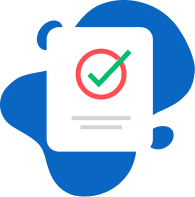Diploma in Computer Science and Engineering Syllabus and Subjects

The syllabus for Diploma in Computer Science and Engineering is divided into six semesters spread across three years. The Diploma in Computer Science and Engineering subjects include Engineering Mathematics, Applied Physics, Fundamentals of Electrical & Electronics, Applied Chemistry, and Computer Centre Management.
Semester Wise Diploma In Computer Science and Engineering Syllabus
The Diploma In Computer Science and Engineering syllabus has core and elective subjects in its three-year-long curriculum. The aspirants can access Diploma In Computer Science and Engineering course materials by going to the official website of the colleges. The Diploma In Computer Science and Engineering course is designed in a semester wise format, where the three years are divided into six semesters.
The semester wise syllabus for the course is given below:
Diploma in Computer Science and Engineering First Year Syllabus
The table below contains the semesters of the Diploma in Computer Science and Engineering first-year syllabus:
| Semester I | Semester II |
| Communication Skills- I | Communication Skills- II |
| Value and Ethics in Technical Education | Engineering Drawing |
| Engineering Mathematics I | Engineering Mathematics II |
| Applied Physics | Fundamentals of Electrical & Electronics |
| Applied Chemistry | Computer Center Management |
| Computer Fundamentals & applications | Programming in C |
Diploma in Computer Science and Engineering Second Year Syllabus
The table below contains the semesters of the Diploma in Computer Science and Engineering second-year syllabus:
| Semester III | Semester IV |
| Engineering Economics | Marketing management |
| Electronics Workshop | Computer Architecture |
| Data Structure | Database Management System |
| Operating Systems | Linux O.S |
| Network Essentials | Multimedia Technology & Application |
| Object-Oriented Programming in C++ | Programming in visual basics |
Diploma in Computer Science and Engineering Third Year Syllabus
The table below contains the semesters of the Diploma in Computer Science and Engineering third-year syllabus:
| Semester III | Semester IV |
| Software Engineering | Entrepreneurship Development |
| MP & Programming | Project |
| Client-Server Applications | Networking Technology |
| System Software | Computer Networks |
| Web page design | Network installation and Management |
| - | Wireless and Mobile communication |
| - | Industrial training for 6-week duration |
Diploma In Computer Science and Engineering Subjects
The course subjects aim to ensure that the students have access to all the vital and key information they need to succeed in their career paths. The curriculum is designed to ensure that the students are aware of all the relevant topics of the industry. Core subjects emphasize foundation topics. Elective subjects are optional subjects that make the curriculum more diverse and flexible.
Diploma In Computer Science and Engineering Core Subjects
Listed below are the Diploma In Computer Science and Engineering subjects that are core in the curriculum and the students study about:
- Entrepreneurship Development
- MP & Programming
- Client-Server Application
- Networking Technology
- System Software
- Computer Networks
Diploma In Computer Science and Engineering Course Structure
The course structure predominantly remains the same across the different colleges. The students study through the core and elective subjects in the curriculum. The course structure consists of six semesters wherein the students have to work on a research project in the final semester.
The course structure is given below:
- VI Semesters
- Diploma Course
- Core Subjects
- Elective Subjects
- Research Project
Diploma In Computer Science and Engineering Teaching Methodology and Techniques
The course's teaching methodology is designed to help students learn about the vital topics of the subject in an easy and defined manner. The teaching methodology has both theoretical and practical sessions, along with internships.
Listed below are the teaching methodology and strategies in general:
- Lectures
- Practical Sessions
- Research Papers
- Seminars
- Group Discussions
- Internships
Diploma In Computer Science and Engineering Projects
When pursuing the Diploma in CSE course, the students must work on research projects. These research projects are a means for the professors to assess the student's understanding of the topics. Some of the popular project topics undertaken by the students are mentioned below:
- Web page design
- Network installation and Management
- Wireless and Mobile communication
- Learning from Industrial training for 6 week's duration
Diploma In Computer Science and Engineering Reference Books
When pursuing the course, investing in reference books is an important step for the students. Reference books can help the students learn about the topics better and help with their learning process. Listed below are some of the popular Diploma In Computer Science and Engineering books PDF that the students can invest in:
| Name of Book | Author |
| Algorithms to Live by: The computer science of human decisions | Brian Christine and Tom Griffiths |
| Hackers: Heroes of the Computer revolution | Steven Levy |
| Code: The hidden language of computer hardware and software | Charles Pezold |
| Superintelligence: Paths, Dangers, Strategies | Nick Bostron |


